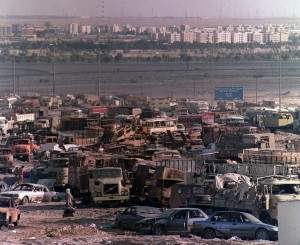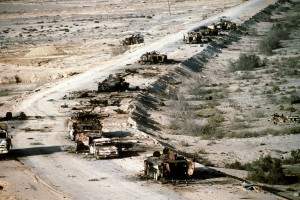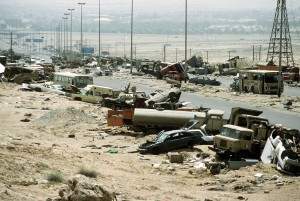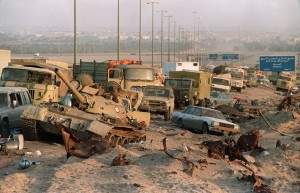Why I support censorship
November 9, 2023 by Thomas Wictor
Although my collection of World War I photos and postcards has over 10,000 items in it, there’s only one that shows dead soldiers. I’ve turned down offers to buy images that other collectors would’ve given all their teeth to own. It’s because I regard pictures of the dead as pornography. There’s a natural human urge to confront death, so I don’t think wanting to see such photos is in itself wrong. But I support the total censorship of photos and videos that depict dead soldiers and civilians killed in war.
Conversely, I don’t support the censorship of atrocity images. I believe that publishing them diminishes their impact; still, people need to know what the enemy is doing. If they don’t view the material themselves, they should at least be able to hear a description.
So: I’m saying in plain language that I support the censorship of images that show my side taking losses, killing the enemy, and accidentally inflicting casualties on civilians. The reason I want these photos and videos suppressed is that I want my side to win.
A few days ago I read a long article about a photographer who tried to publish images of Iraqi soldiers killed as they retreated out of Kuwait on Highway 80 and Highway 8, February 26 to 27, 1991. The convoy was attacked by American jets for a period of ten hours. Photos of the “carnage” caused an international outcry, and President George H. W. Bush announced a cessation to hostilities on February 28. To this day, the scene is called the Highway of Death or Mile of Death, and it’s a total fabrication.
What’s missing in these photos?
There aren’t any corpses on this “Highway of Death.” You know why? Because Iraqis are not morons.
This giant convoy full of murderers, rapists, and thieves was attacked by US fighters that dropped cluster munitions on the vehicles in front. When the bombs hit, and explosions were seen, every single soldier in a car or military vehicle bailed out and ran into the desert or the swamps. They didn’t sit there, saying, “Hey: Something changed!” (Hat tip to Brian Regan.)
It’s clear that some Iraqi soldiers were killed. I’ve seen photographic evidence of maybe two dozen. Initially we were told that it was 12,000, but now the “experts” say 800 to 1000. I don’t believe that for a second, but let’s say it’s true.
During the occupation of Kuwait, the Iraqi soldiers bombed on the Highway of Death killed over 1000 civilians, and they kidnapped a further 605, none of whom were ever found alive. The Iraqis also tortured and raped about 6000 Kuwaitis. So even if 1000 Iraqi soldiers were killed, it’s “proportional,” to use a stupid buzzword that applies only to the armed forces of the US and Israel.
Furthermore, the Iraqi soldiers were conducting a “fighting withdrawal.” They were shooting antiaircraft artillery and missiles at the American aircraft. In war, when the enemy retreats, you blow the hell out of him so that he can’t regroup and launch a counterattack.
Reporters don’t know anything about war, because they feel that if they inform themselves, their peers will think they’re conservatives. Studying munitions, weapons, tactics, uniforms, and so on must mean you’re a Bible-thumper who loves war. Being a conservative makes you more evil than a murderer; having knowledge of military matters is a crime.
Fine, but reporters still ought to know that when attacking the enemy, you risk being hit by a counterattack that will destroy you. The Germans invented the science of counterattacks in World War I. They specially trained counterattack divisions (Eingreifdivisionen) whose only job was to spring a trap on the advancing enemy using incredibly violent shock-troop tactics.
These are men from Infantry Regiment No. 116, part of a counterattack division.
Each is armed with a pistol, a trench dagger, and two bags of hand grenades. Counterattack specialists would wait until the enemy advance had been halted by artillery or machine-gun fire, and then they would pounce, inflicting as many casualties as they could in the shortest amount of time. They were trained as long-distance runners, and they could throw grenades almost twice as far as the average soldier.
You bomb the enemy while he’s retreating, because you don’t want to give him a chance to organize a counterattack. Unless he unambiguously surrenders, he’s a legitimate target, whether he’s running toward you or away from you. This is the only time you don’t attack an enemy.
The photographer who took pictures of a few charred Iraqi soldiers on the fake Highway of Death “angrily” said a very telling thing.
If we’re big enough to fight a war, we should be big enough to look at it.
It’s clear that he had an agenda: He wants Americans to be so horrified by what we’ve done that we’ll never fight another war. This is what drives well over 90 percent of reporting on American wars. Journalists oppose all American use of force, under any circumstances. Therefore I support total censorship of photos that show American dead or wounded, enemy dead or wounded, and civilian dead or wounded. The goal of publishing these images is to undermine the morale of the home front.
The funny thing is, Americans aren’t idiots who think that war is bloodless. It’s our politicians who are the problem. They’re terrified of being held accountable. President George H.W. Bush ended the Gulf War based on a mirage—the Highway of Death. In the Second Lebanon War of 2006, American Secretary of State Condoleezza Rice pressured Israel into withdrawing after she saw photos of Hezbollah operative Salam Daher displaying dead children for the cameras.
The images of Daher and his prizes were clearly staged. In one case Daher simply marched around barking as he held the infant aloft, and in another the same child appeared in two different places at different times. But our weak, soft-headed Secretary of State apparently thought that wars could be fought without hurting anyone. As a result, Daher was able to manipulate her into changing the course of history.
Not one person on earth makes a good-faith argument that photos of war should be shown. Every single demand that we see death and destruction is nefarious.
Since journalists, photographers, academics, writers, pundits, activists, and medical workers lie about their motivations, I see no reason to give in to them.
This article viewed 984 times.







